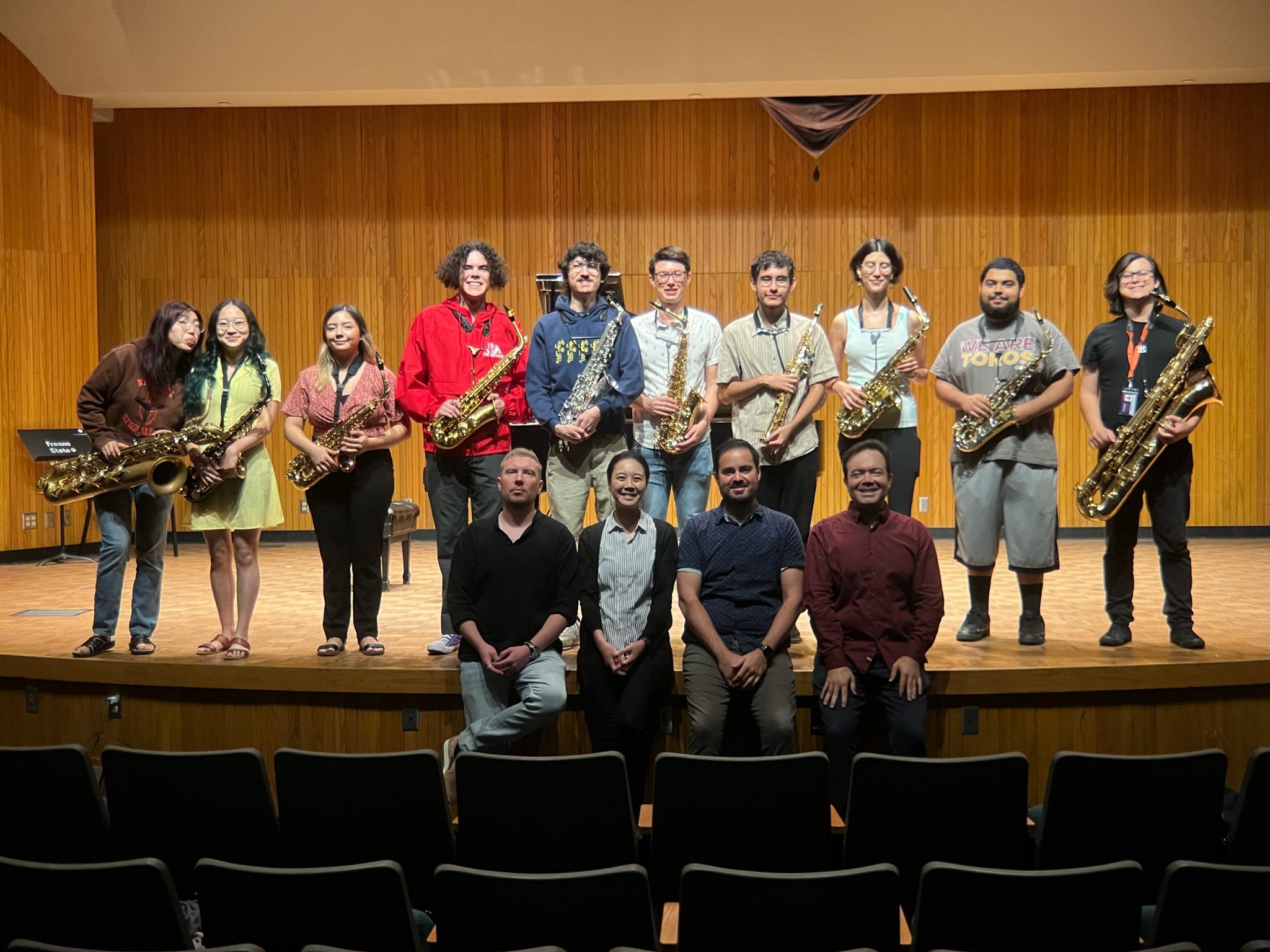Summer Arts Saxophone Course
So, you have two weeks of ultimate saxophone course to map out. Ready, Set, GO!
Well…..where to start?
Putting together this course required months of careful planning. I had many discussions especially with the two California saxophone teachers and guest artists- Dr. John Hallberg (CSU Fullerton) and Dr. Ricardo Martinez (University of the Pacific) and talked about what we consider to be our ultimate two weeks of impacted saxophone course. When we were once students, we have all gone to some US and international summer music and saxophone festivals which we all had a great time learning and making friends who we still keep in touch with. We had taken some aspects from our experiences, such as lessons, masterclasses, ensembles and performances which strengthened playing skills which we had modeled in our Summer Arts course. What I felt could be added on to our program were to talk about how does a student enter into the professional music/saxophone industry. Today, musicians are required to not only play the instrument but do all kinds of music business, communication, selling your brand and producing creative work. While classical saxophone is still not as common to a lot of music listeners, I really feel that in order for our music to reach audiences, we as artists must keep pushing ourselves as artists and the music out into the world.
The course was designed for college level players (undergraduate, graduate, and postgraduate), exceptional high school players, and advanced adult recreational players. This year we were fortunate that we had 10 selected exceptional student players who worked very hard from morning to late evening. Everyday was a full-on saxophone extravaganza where they were learning and playing so much throughout the day lessons, masterclasses and lectures put on by amazing guest artists. We were so fortunate to have had, David Stambler (Pennsylvania State), Christopher Creviston (Arizona State), Joseph Lulloff (Michigan State), Benjamin Boone (Fresno State), John Hallberg (CSU Fullerton), Ricardo Martinez (University of the Pacific) giving us so much knowledge to the students
The course was structured very simple and clear. Here is the basic structure of the day:
Morning (9am-12pm): Class Time/Lecture (1hour) | Masterclass (2hours)
Afternoon (2pm-5pm): Lesson (2 hours) | Ensemble rehearsal (1hour)
Evening: Practice, rehearsal | Public event concerts 7:30pm-9pm
In the morning, the Class Time started with a Technique class where they worked on scales and warm-ups. We sometimes put Lecture for guest artists to talk about music business, tone production and technique building. For masterclass, we had allocated all students to have an opportunity to play in front of others. For the afternoon, we had at least three individual lessons for each students by different teachers so that they can receive different feedbacks from one another. Small ensemble rehearsal consisted or duos, trios and quartets. We also implemented large ensemble, which all 10 of them participated. YES, lots of music that students had to learn in two weeks time! I will write more about it in Part 3 - Students Experiences and Transformation. Evening was mainly large ensemble rehearsal, individual practice, and going to public concerts.
We also assigned time for vendors to talk about the products and bringing in some samples and horn and accessory trials. This year, we had Vandoren, Legere and Gottshalk Music.
A lot happened in two weeks time but everything went extremely well! I also had great team of amazing teachers who were like-minded and was able to work closely with students. In part 2, I will be talking about the guest artists, how we communicated throughout the course and the performances.




